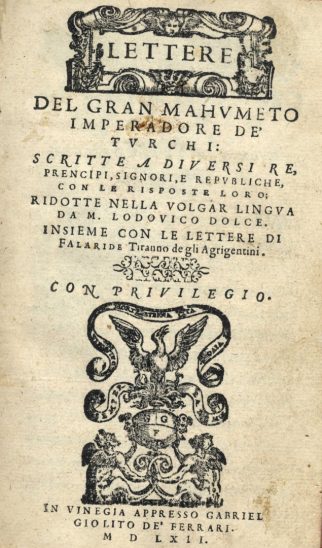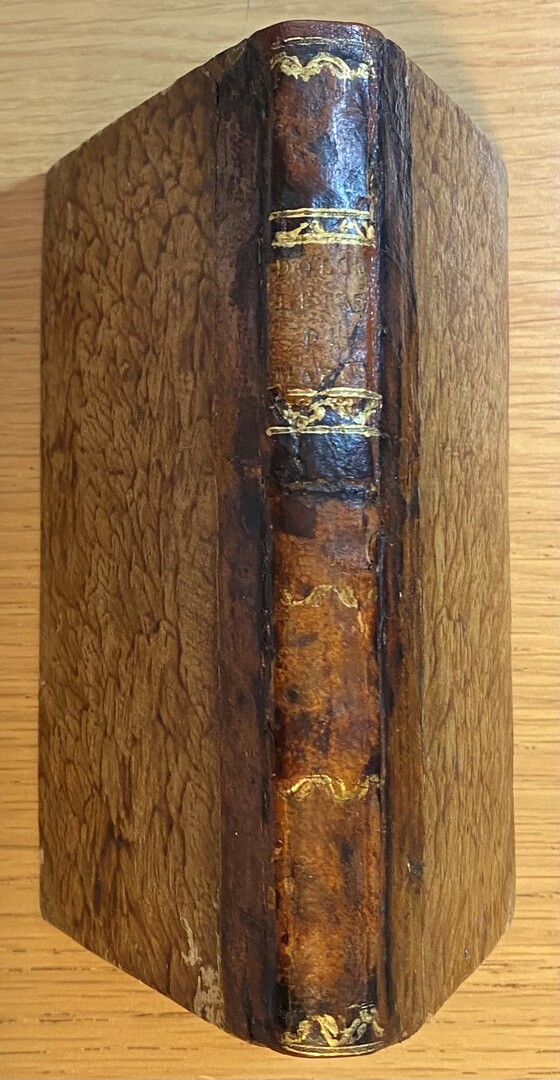Lettere del Gran Mahumeto Imperadore de Turchi: scritte a diversi re, prencipi, signori, e republiche, con le risposte loro; ridotte nella volgar lingua da M. Lodouico Dolce. Insieme con le lettere di Falaride Tiranno de gli Agrigentini.
Zacchia, Laudivio de (Attributed to). 1556-1637.
Synopsis
RARE- The de Ferrari printing is usually encountered in the 1563 edition (the Blackmer copy was of this date), and copies with the 1562 date appear to be rare. The work first appeared in 1473. Purportedly, it is a translation of letters by Mehmet II, Sultan of Turkey, but was probably written by Laudivio Zacchia. This is part of a literature of the Sultan’s brief, so-called, purported communications from Eastern potentates written at a time of great anxiety about incursions by the Ottoman Empire; this example is essentially popular epistolary fiction by Zacchia, who styles himself in his foreword as being only the collector of a small quantity of very short letters exchanged between Mehmet II and various Christian and oriental principalities.
These very short letters of hardly more than one or two pages pretended to have been written by an Egyptian or Ottoman sultan to a Christian prince and were highly popular in the 14th to 16th centuries. The 15th century brought not only a climax of the Ottoman expansion but also important technical innovations. The fall of Constantinople in 1453 to the Ottoman Turks coincided with the invention of the printing press. A dozen of printed copies of anti-Turkish material survived from that period. Certainly the most striking example is Laudivio Zacchia’s Epistolae Magni Turci. They were printed for the first time in 1473 in Naples and have seen 18 incunabula editions by the year 1500. Zacchia’s letters were clearly intended to be read by circles that formed part of the new emerging public sphere promoted by the new print medium.
Bibliographic reference: Blackmer 955 for 1563 edition.








